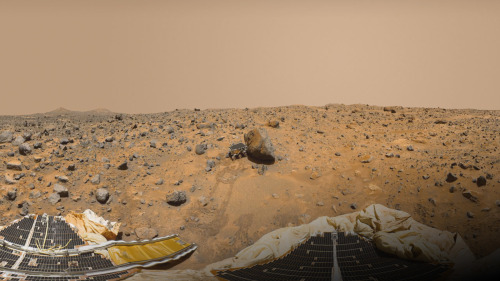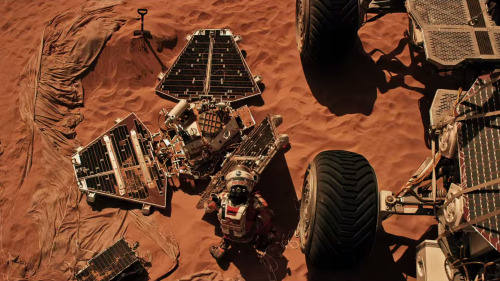Your personal Tumblr journey starts here
Mission To Mars - Blog Posts

Mars Perseverance Rover Mission Landing Site
The Jezero crater (circle) on Mars was where the Mars Perseverance rover landed.
https://www.instagram.com/spaceexploration_genz/
https://www.vsual.co/shop/space-exploration-gen-z
https://www.redbubble.com/people/astro3antica/shop

Mars Perseverance Rover Head Section
The Mars Perseverance rover with its several cameras: SuperCam (Remote Micro-Imager), Mastcam-Z and Navcam.
https://www.instagram.com/spaceexploration_genz/
https://www.vsual.co/shop/space-exploration-gen-z
https://www.redbubble.com/people/astro3antica/shop

NASA tested new “eyes” for its next Mars rover mission on a rocket built by Masten Space Systems in Mojave, California, thanks in part to NASA’s Flight Opportunities Program, or FOP.
The agency’s Jet Propulsion Laboratory in Pasadena, California, is leading development of the Mars 2020 rover and its Lander Vision System, or LVS. In 2014, the prototype vision system launched 1,066 feet (325 meters) into the air aboard Masten’s rocket-powered “Xombie” test platform and helped guide the rocket to a precise landing at a predesignated target. LVS flew as part of a larger system of experimental landing technologies called the Autonomous Descent and Ascent Powered-flight Testbed, or ADAPT.
LVS, a camera-based navigation system, photographs the terrain beneath a descending spacecraft and matches it with onboard maps allowing the craft to detect its location relative to landing hazards, such as boulders and outcroppings.
The system can then direct the craft toward a safe landing at its primary target site or divert touchdown toward better terrain if there are hazards in the approaching target area. Image matching is aided by an inertial measurement unit that monitors orientation.
The Flight Opportunities Program funded the Masten flight tests under the Space Technology Mission Directorate. The program obtains commercial suborbital space launch services to pursue science, technology and engineering to mature technology relevant to NASA’s pursuit of space exploration. The program nurtures the emerging suborbital space industry and allows NASA to focus on deep space.
Andrew Johnson, principal investigator in development of the Lander Vision System development, said the tests built confidence that the vision system will enable Mars 2020 to land safely.
“By providing funding for flight tests, FOP motivated us to build guidance, navigation and control payloads for testing on Xombie,” Johnson said. “In the end we showed a closed loop pinpoint landing demo that eliminated any technical concerns with flying the Lander Vision System on Mars 2020.”
According to “Lander Vision System for Safe and Precise Entry Descent and Landing,” a 2012 abstract co-authored by Johnson for a Mars exploration workshop, LVS enables a broad range of potential landing sites for Mars missions.
Typically, Mars landers have lacked the ability to analyze and react to hazards, the abstract says. To avoid hazards, mission planners selected wide-open landing sites with mostly flat terrain. As a result, landers and rovers were limited to areas with relatively limited geological features, and were unable to access many sites of high scientific interest with more complex and hazardous surface morphology. LVS will enable safe landing at these scientifically compelling Mars landing sites.
An LVS-equipped mission allows for opportunities to land within more challenging environments and pursue new discoveries about Mars. With LVS baselined for inclusion on Mars 2020, the researchers are now focused on building the flight system ahead of its eventual role on the Red Planet.
To learn more about NASA’s flight opportunities program, visit:
https://flightopportunities.nasa.gov/
To read more about NASA’s Mars 2020 rover, visit:
http://mars.nasa.gov/mars2020/
Morning on Mars






6 Martian sunrises, as seen by the HiRISE orbiter. Once again, not artist’s renditions.
omg okay so this is pretty interesting but I HAVE SO MANY QUESTIONS . . . I need to think more about this but I have my . . . doubts XD
@maevemauvaise I can’t vouch for the veracity but this is pretty damn cool.



ExoMars Orbiter’s First Images
(Image credit: ESA/Roscosmos/ExoMars/CaSSIS/UniBE)
LOL oh @claraxbarton you know me SO well!
I’ve totally got the first ep on my DVR - I just haven’t had time to watch it lol
@maevemauvaise !!!!!!!!!!!!
Solar System: Things to Know This Week
Learn about the science of photonics to create space communications, get updates on Juno, mining data from Voyager for new discoveries and more.

1. Carried on a Beam of Light
One of our major priorities is to make space communications more efficient. While our communications systems have matured over the decades, they still use the same radio-frequency system developed in the earliest days of the agency. After more than 50 years, we’re investing in new ways to increase data rates while also finding more efficient communications systems. Photonics–generating, detecting and manipulating particles of light–may provide the solution.
+ See how it works

2. It’s No Joke: Two New Moons for the Seventh Planet
Voyager 2 spacecraft flew by Uranus 30 years ago, but researchers are still making discoveries using the data it gathered. A new study led by University of Idaho researchers suggests there could be two tiny, previously undiscovered moonlets orbiting near two of the planet’s rings.
+ Find out how they were discovered

3. Vortex of Mystery
As southern winter solstice approaches in the Saturn system, our Cassini spacecraft has revealed dramatic seasonal changes in the atmospheric temperature and composition of Saturn’s largest moon, Titan. Winter is taking a grip on Titan’s southern hemisphere, and a strong, whirling vortex has intensified in the upper atmosphere over the south pole.
+See more

4. The Spiders of Mars
Ten thousand volunteers viewing images of Martian south polar regions have helped identify targets for closer inspection, yielding new insights about seasonal slabs of frozen carbon dioxide and erosional features known as “spiders.” From the comfort of home, the volunteers have been exploring the surface of Mars by reviewing images from the Context Camera on our Mars Reconnaissance Orbiter and identifying certain types of seasonal terrains near Mars’ south pole.
+ Learn more and see how you can join in

7. Better Safe than Sorry
Juno entered safe mode last week and early indications are a software performance monitor induced a reboot of the spacecraft’s onboard computer. In this case, the safe mode turned off instruments and a few non-critical spacecraft components, and it confirmed the spacecraft was pointed toward the sun to ensure the solar arrays received power.The spacecraft acted as expected during the transition into safe mode, restarted successfully and is healthy. High-rate data has been restored, and the spacecraft is conducting flight software diagnostics. Meanwhile, the Juno science team continues to analyze returns from the first close Jupiter flyby on Aug. 27. Revelations so far include that Jupiter’s magnetic fields and aurora are bigger and more powerful than thought. Scientists have also had their first glimpse below the planet’s swirling cloud deck. The next close flyby is scheduled on Dec. 11, with all science instruments on.
+ Get the details
Discover the full list of 10 things to know about our solar system this week HERE.
Make sure to follow us on Tumblr for your regular dose of space: http://nasa.tumblr.com
Solar System: Things to Know This Week
There’s even more to Mars.

1. Batten Down the Hatches
Good news for future astronauts: scientists are closer to being able to predict when global dust storms will strike the Red Planet. The winds there don’t carry nearly the same force that was shown in the movie “The Martian,” but the dust lofted by storms can still wreak havoc on people and machines, as well as reduce available solar energy. Recent studies indicate a big storm may be brewing during the next few months.
+ Get the full forecast

2. Where No Rover Has Gone Before
Our Opportunity Mars rover will drive down an ancient gully that may have been carved by liquid water. Several spacecraft at Mars have observed such channels from a distance, but this will be the first up-close exploration. Opportunity will also, for the first time, enter the interior of Endeavour Crater, where it has worked for the last five years. All this is part of a two-year extended mission that began Oct. 1, the latest in a series of extensions going back to the end of Opportunity’s prime mission in April 2004. Opportunity landed on Mars in January of that year, on a mission planned to last 90 Martian days (92.4 Earth days). More than 12 Earth years later, it’s still rolling.
+ Follow along + See other recent pictures from Endeavour Crater

3. An Uphill Climb
Opportunity isn’t the only NASA Mars rover getting a mission extension. On the other side of the planet, the Curiosity rover is driving and collecting samples amid some of the most scenic landscapes ever visited on Mars. Curiosity’s two-year mission extension also began Oct. 1. It’s driving toward uphill destinations, including a ridge capped with material rich in the iron-oxide mineral hematite, about a mile-and-a-half (two-and-a-half kilometers) ahead. Beyond that, there’s an exposure of clay-rich bedrock. These are key exploration sites on lower Mount Sharp, which is a layered, Mount-Rainier-size mound where Curiosity is investigating evidence of ancient, water-rich environments that contrast with the harsh, dry conditions on the surface of Mars today.
+ Learn more

4. Keep a Sharp Lookout
Meanwhile, the Mars Reconnaissance Orbiter continues its watch on the Red Planet from above. The mission team has just released a massive new collection of super-high-resolution images of the Martian surface.
+ Take a look

5. 20/20 Vision for the 2020 Rover
In the year 2020, Opportunity and Curiosity will be joined by a new mobile laboratory on Mars. In the past week, we tested new “eyes” for that mission. The Mars 2020 rover’s Lander Vision System helped guide the rocket to a precise landing at a predesignated target. The system can direct the craft toward a safe landing at its primary target site or divert touchdown toward better terrain if there are hazards in the approaching target area.
+ Get details
Discover the full list of 10 things to know about our solar system this week HERE.
Make sure to follow us on Tumblr for your regular dose of space: http://nasa.tumblr.com

This is a picture from the Curiosity Rover on Mars showing Earth from the Perspective of Mars. You are literally looking at your home from the Perspective of another planet. Epic times indeed
//screams// THIS IS LOVELY OMG
Finally
HUGE ANNOUNCEMENT!
Elon Musk is set to announce his plans for Mars colonization in an hour, at 2:30 Eastern Time.
Please watch it because this could be history in the making.

NASA Is Considering A Deep Sleep Option for Mars Mission Crew
A NASA-backed study is exploring an innovative way to dramatically cut the cost of a human expedition to Mars — put the crew in stasis.
The deep sleep, called torpor, would reduce astronauts’ metabolic functions with existing medical procedures. Torpor also can occur naturally in cases of hypothermia.
“Therapeutic torpor has been around in theory since the 1980s and really since 2003 has been a staple for critical care trauma patients in hospitals,” aerospace engineer Mark Schaffer, with SpaceWorks Enterprises in Atlanta, said at the International Astronomical Congress in Toronto this week. “Protocols exist in most major medical centers for inducing therapeutic hypothermia on patients to essentially keep them alive until they can get the kind of treatment that they need.”
Coupled with intravenous feeding, a crew could be put in hibernation for the transit time to Mars, which under the best-case scenario would take 180 days one-way.
So far, the duration of a patient’s time in torpor state has been limited to about one week.
“We haven’t had the need to keep someone in (therapeutic torpor) for longer than seven days,” Schaffer said. “For human Mars missions, we need to push that to 90 days, 180 days. Those are the types of mission flight times we’re talking about.”
Impressive Payoffs
Economically, the payoff looks impressive. Crews can live inside smaller ships with fewer amenities like galleys, exercise gear and of course water, food and clothing. One design includes a spinning habitat to provide a low-gravity environment to help offset bone and muscle loss.
SpaceWorks’ study, which was funded by NASA, shows a five-fold reduction in the amount of pressurized volume need for a hibernating crew and a three-fold reduction in the total amount of mass required, including consumables like food and water.
Overall, putting a crew in stasis cuts the baseline mission requirements from about 400 tons to about 220 tons.
“That’s more than one heavy-lift launch vehicle,” Schaffer said.
The Big Chill
The study looked at a two-part system for putting Mars-bound astronauts in stasis and bringing them out. The cooling would be done through an internasal system, which Schaffer admits is “not very comfortable,” but inhaling a coolant has several advantages over reducing body temperatures with external cooling pads. Cooled from the outside, the body is more susceptible to shivering and possible tissue damage, Schaffer notes.
The so-called RhinoChill System lowers body temperature about 1 degree Fahrenheit per hour. Reaching torpor state — between 89 degrees and 93 degrees Fahrenheit — takes about six hours.
Simply stopping the flow of coolant will bring a person out of stasis, though the SpaceWorks study included rewarming pads as a backup and to speed up the waking process in case of an emergency.
An alternative to having the whole crew in stasis is to have one person awake for two to three days, then hibernate for 14 days. By staggering the shifts, no one person would be in stasis for more than 14 days at a time and one crewmember would be awake to monitor the ship, conduct science experiments and handle maintenance chores.
Schaffer also points to a potential psychological advantage to stasis.
“Rather than being stuck in a can for 180 days, you go to sleep, you wake up and you’re there,” he said. More research is needed to assure prolonged stasis is safe, but initial results are promising, Schaffer added.
“We have not seen any show-stoppers on the medical side or on the engineering side,” he said.

What’s hard about Mars?
Mars, unlike the Moon, is far away. It also has an atmosphere - but not a useful one. Atmospheric density, wind, dust storms… all of these things contribute to a larger list of circumstances that any given mission needs to be ready for.
All those circumstances contribute heavily to the cost, time and hard resources needed to be poured into the mission preparation. In addition, the vast distance to Mars means the cost of carrying all this prepared hardware must be covered.
The atmosphere of Mars is such that if you’re going too fast during entry, you’ll burn up. It’s such a low density however that parachutes aren’t tremendously useful.
During the Curiosity rover’s landing it needed a heat shield, a supersonic parachute, rocket boosters to slow it down, a sky-crane to allow Curiosity to drop to the surface like an interplanetary spider and then explosive propulsion to send the platform it dropped from a safe distance away to crash into the surface.
During this landing, the rover experienced a force of about 15 g’s. That force would make a 200 lb man weigh 3000 lbs. Without proper precautions it would make the average head snap down at about 150 to 165 lbs.
NASA’s developing a new type of parachute and it’s being attached to a flying saucer-like spacecraft known as the Low-Density Supersonic Decelerator. This is currently hoped to provide NASA with a stable go-to architecture for future Mars missions.
The red planet’s killed most missions sent there. Power for solar-panels on rovers get covered during planet-wide dust storms. Some missions smashed into its moons. Some have smashed into its surface. Others have simply missions the planet entirely only to drift away as Mars dances around the Sun.
The world is an untamed place and has sought to buck all attempts to temper its mysteries.
(Image credit: ESA / DLR / FU Berlin (G. Neukum) / animation by Emily Lakdawalla)

NASA scientists have reported that they’ve successfully tested an engine called the electromagnetic propulsion drive, or the EM Drive, in a vacuum that replicates space. The EM Drive experimental system could take humans to Mars in just 70 days without the need for rocket fuel, and it’s no exaggeration to say that this could change everything.
But before we get too excited (who are we kidding, we’re already freaking out), it’s important to note that these results haven’t been replicated or verified by peer review, so there’s a chance there’s been some kind of error. But so far, despite a thorough attempt to poke holes in the results, the engine seems to hold up.
Continue Reading.
Space Station Research: Cardiovascular Health
Each month, we highlight a different research topic on the International Space Station. In February, our focus is cardiovascular health, which coincides with the American Hearth Month.
Like bones and muscle, the cardiovascular system deconditions (gets weaker) in microgravity. Long-duration spaceflight may increase the risk of damage and inflammation in the cardiovascular system primarily from radiation, but also from psychological stress, reduced physical activity, diminished nutritional standards and, in the case of extravehicular activity, increased oxygen exposure.

Even brief periods of exposure to reduced-gravity environments can result in cardiovascular changes such as fluid shifts, changes in total blood volume, heartbeat and heart rhythm irregularities and diminished aerobic capacity.

The weightless environment of space also causes fluid shifts to occur in the body. This normal shift of fluids to the upper body in space causes increased inter-cranial pressure which could be reducing visual capacity in astronauts. We are currently testing how this can be counteracted by returning fluids to the lower body using a “lower body negative pressure” suit, also known as Chibis.
Spaceflight also accelerates the aging process, and it is important to understand this process to develop specific countermeasures. Developing countermeasures to keep astronauts’ hearts healthy in space is applicable to heart health on Earth, too!

On the space station, one of the tools we have to study heart health is the ultrasound device, which uses harmless sound waves to take detailed images of the inside of the body. These images are then viewed by researchers and doctors inside Mission Control. So with minimal training on ultrasound, remote guidance techniques allow astronauts to take images of their own heart while in space. These remote medicine techniques can also be beneficial on Earth.
Make sure to follow us on Tumblr for your regular dose of space: http://nasa.tumblr.com








Very strange things happen to your body if you spend a year in space
NASA Astronaut Scott Kelly returns to Earth Tuesday night after spending almost a year in space.
But his 340 days aboard the International Space Station (ISS) haven’t been all fun and games.
Our bodies evolved on Earth, so they’re not built for weightlessness — which is exactly why NASA plans to use Kelly to study the long-term effects of spaceflight the human body.


Mars Pathfinder & Sojourner Rover (360 View) Explained
Thanks to new technology, we can take a 360-degree tour of the 1997 Pathfinder mission landing site, including Sojourner, the first Mars rover. Check out this interactive YouTube panorama, and then…
…keep scrolling to find out more about each point of interest, how the Pathfinder mission compares to “The Martian” and NASA’s real Journey to Mars.

Yogi
“Yogi” is a meter-size rock about 5 meters northwest of the Mars Pathfinder lander and the second rock visited by the Sojourner Rover’s alpha proton X-ray spectrometer (APXS) instrument. This mosaic shows super resolution techniques applied to help to address questions about the texture of this rock and what it might tell us about how it came to be.

Twin Peaks
The Twin Peaks are modest-size hills to the southwest of the Mars Pathfinder landing site. They were discovered on the first panoramas taken by the IMP camera on the July 4, 1997, and subsequently identified in Viking Orbiter images taken over 20 years ago. They’re about 30-35 meters tall.

Barnacle Bill
“Barnacle Bill” is a small rock immediately west-northwest of the Mars Pathfinder lander and was the first rock visited by the Sojourner Rover’s alpha proton X-ray spectrometer (APXS) instrument. If you have some old-school red-cyan glasses, put them on and see this pic in eye-popping 3-D.

Rock Garden
The Rock Garden is a cluster of large, angular rocks tilted in a downstream direction from ancient floods on Mars. The rocky surface is comprised of materials washed down from the highlands and deposited in this ancient outflow channel.

MOAR INFO
Pathfinder Lander & Sojourner Rover
Mission Facts [PDF]
Science Results
Rock & Soil Types


This vista was stitched together from many images taken in 1997 by Pathfinder.

Pathfinder and Sojourner figure into Mark Watney’s quest for survival on the Red Planet in the book and movie, “The Martian.” See JPL’s role in making “The Martian” a reality: http://go.nasa.gov/1McRrXw and discover nine real NASA technologies depicted in “The Martian”: http://go.nasa.gov/1QiyUiC.

So what about the real-life “Journey to Mars”? NASA is developing the capabilities needed to send humans to Mars in the 2030s. Discover more at http://nasa.gov/journeytomars and don’t forget to visit me when you make it to the Red Planet. Until then, stay curious and I’ll see you online.
How Do You Stay Fit on a Mission to Mars?
This mini exercise device could be the key!
Onboard the International Space Station, astronauts need to work out to maintain their bone density and muscle mass, usually exercising 2 hours every single day. Throughout the week, they exercise on three different pieces of equipment–a bike, a treadmill and the Advanced Restive Exercise Device (ARED).

All these devices are needed to keep an astronaut healthy.
However, deep-space vehicles like our Orion Spacecraft aren’t as roomy as station, so everything — including exercise equipment — needs to be downsized. The Miniature Exercise Device (MED-2) is getting us one step closer to being able to keep astronauts’ bodies healthy on long journeys to the moon, Mars and beyond.

MED-2 is a compact, all-in-one exercise device that we developed and will be launching to the space station Tuesday, March 22. Onboard the station, we’ll see how MED-2 will perform in microgravity and how it will need to be further adapted for our Journey to Mars. However, it’s already pretty well equipped for deep space missions.
So what makes MED-2 so great for deep space travel and our Journey to Mars?
1. It is an all-in-one exercise device, meaning it can do both aerobic and resistive workouts. When we go to Mars, the less equipment we need, the better.

2. It’s incredibly light. The MED-2 weighs only 65 pounds, and every pound counts during space missions.

3. It has 5 - 350 pounds of resistance, despite weighing only 65 pounds. Astronauts don’t all lift the same amount, making the flexibility in MED-2’s “weights” essential.

4. It’s tiny. (Hence its name Miniature Exercise Device.) Not only is MED-2 incredibly light, but it also won’t take up a lot of space on any craft.

5. It powers itself. During an aerobic workout, the device charges, and then that power is used to run the resistive exercises. When traveling to space, it’s good when nothing goes to waste, and now astronauts’ workouts will help power the Journey to Mars.

MED-2 is only one of many devices and experiments flying on Orbital ATK’s Cygnus spacecraft. To find out more about the science on the space station, follow @ISS_Research and @Space_Station on Twitter.
Make sure to follow us on Tumblr for your regular dose of space: http://nasa.tumblr.com
The Five W’s of an Expandable Habitat in Space
Who: In this case, it’s really a “what.” The Bigelow Expandable Activity Module (BEAM) is an expandable module developed by Bigelow Aerospace using a NASA patent conceptualized in the 1990s. It is made up of layers of fabric that will expand when installed and equalize with the pressure of the International Space Station.

What: Sensors inside BEAM will monitor temperature and radiation changes, as well as its resistance to potential orbital debris impacts. During its time on station, the airlock between BEAM and the rest of the space station will remained closed, and astronauts will enter only to collect data and help the experiment progress. If BEAM is punctured, the habitat is designed to slowly compress to keep the rest of the space station safe.
With the BEAM launch, deployment and time on station, Bigelow will demonstrate a number of expandable habitat capabilities, such as its folding and packing techniques, radiation protection capability and its thermal, structural and mechanical durability.

When: BEAM is set to launch on SpaceX’s eighth Dragon resupply mission April 8, and will be docked to the space station for a minimum two-year demonstration period.
Where: The International Space Station’s mechanical arm will transport BEAM from the spacecraft to a berthing port on the Tranquility module where it will then be expanded.

Why: These expandable modules take up less room on a rocket, but once set up, provide more volume for living and working in space.

When we’re traveling to Mars or beyond, astronauts need habitats that are both durable and easy to transport and to set up. That’s where expandable technology comes in. BEAM is one of the first steps to test expandable structures as a viable alternative to traditional space habitats.
Make sure to follow us on Tumblr for your regular dose of space: http://nasa.tumblr.com


New Hubble Portrait of Mars (which will be at its closest to us on 30 May)
On May 12, 2016, the Hubble Space Telescope captured this vivid photo of Mars, when the planet was closer to Earth than usual and approaching the opposition (when the sun and Mars will be on exact opposite sides of Earth). Mars is especially photogenic during opposition because it can be seen fully illuminated by the sun as viewed from Earth. Mars will reach opposition on May 22.
Furthermore, the closest approach to Earth for the year will occur on 30 May, when Mars will be at a distance of 75.28 million km (46.78 million miles) from us. For comparison, the average distance between the two is 225 million km. These two events so close together make the coming week(s) the best time to observe the red planet with a telescope. You can already notice it in the night sky (check for your location) as one of the brightest dots with a red-orange glow near the Moon.
Read about the Hubble’s image here.
Image credits: NASA, ESA, the Hubble Heritage Team (STScI/AURA), J. Bell (ASU), and M. Wolff (Space Science Institute)


Scientists find another sign suggesting life existed on Mars
According to new research published in the Journal of Geophysical Research, scientists are getting even more indicators that life once existed on Mars. The latest proof? Carbonates found in 3.8 billion-year-old rock in the Huygens basin.
Follow @the-future-now

in 20-70 million years, Mars’ moon Phobos will get close enough to the surface of the planet that it will be ripped apart by the tidal forces. The resulting debris will most likely give Mars a planetary ring.

Mega-tsunamis in an ancient ocean on Mars may have shaped the landscape and left deposits that hint at whether the planet was once habitable, researchers say.
The giant waves, thought to have reached up to 120 metres in height as they raced over the land, could have been triggered by two large meteorites slamming into the surface.
The tsunamis may been powerful enough to shape much of the ancient coastlines on Mars, said J. Alexis Palmero Rodriguez, of the Planetary Science Institute in Tucson, Arizona, who led the study.
Writing in the journal Scientific Reports, the international team, which included scientists from the US, China and Germany, describe how they set out to probe a Martian mystery.
It has previously been proposed that the lowlands of the northern hemisphere of Mars were catastrophically flooded around 3.4 billion years ago, forming a vast ocean, potentially covering several million square kilometres. But scientists have been puzzled by the lack of an associated shoreline and its expected features.
Now Rodriguez and his team think they may have the answer- the fact that it is hard to make out such ancient shorelines is because huge tsunamis buried them, depositing sediments up to hundreds of kilometres inland.
Continue Reading.








